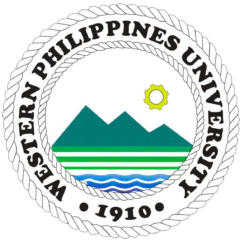![]()
Authors:
Leo Agustin F. Barcelo1, Nacita B. Lantican2, Ruby Lynn G. Ventura3 and Jey-R S. Ventura1*
1Department of Engineering Science, University of the Philippines Los Baños
2Institute of Biological Sciences, University of the Philippines Los Baños
3UP Rural High School, Los Baños, Laguna
*Correspondence: jsventura@up.edu.ph
How to cite:
Barcelo LAF, Lantican NB, Ventura RLG and Ventura JS. 2023. Selected physiological requirements of Purple non-sulfur bacteria isolated from Los Baños, Laguna, for potential biohydrogen production. The Palawan Scientist, 15(2): 31-40.
ABSTRACT
Biohydrogen is gaining traction in energy research due to its high energy content and minimal carbon footprint. A typical method of producing biohydrogen is photofermentation using purple non-sulfur bacteria (PNSB). Exploring novel strains of PNSB and studying their versatile metabolism can aid in bioprospecting their potentially valuable by-products and applications, particularly in energy generation. This study investigated the physiological requirements of top biohydrogen-producing PNSB isolated from various Los Baños, Laguna, Philippines sites by measuring their biogas production and growth when subjected to different incubation conditions and macronutrient requirements. Results showed that the three local isolates grown anaerobically in mesophilic conditions without agitation preferred incandescent light. The high biogas yield and growth may be attributed to the light-harvesting pigments in PNSB, which are excited primarily by infrared and near-infrared wavelengths of incandescent light. Furthermore, the isolates can grow from various carbon sources, such as volatile fatty acids (malate, succinate, acetate, butyrate, and propionate) and sugars (glucose and starch). However, two of the isolates (MAY2 and PR2) did not produce biogas when supplied with acetate as a carbon source, which suggests a competing pathway that may have affected the photofermentation of the isolates. Also, the isolates prefer more complex organic sources such as yeast extract and peptone than inorganic sources such as ammonium and less complex organic sources such as urea. Finally, experiments on salt tolerance showed that 0.04% and 0.85% NaCl concentration favors biohydrogen production and growth, as exhibited by high biogas production, yield, and optical density. Results from this study can serve as a basis for future research on optimizing media composition and conditions for biohydrogen production from these isolates.
Keywords: biohydrogen, photofermentation, purple non-sulfur bacteria

This work is licensed under a Creative Commons Attribution-NonCommercial 4.0 International License
